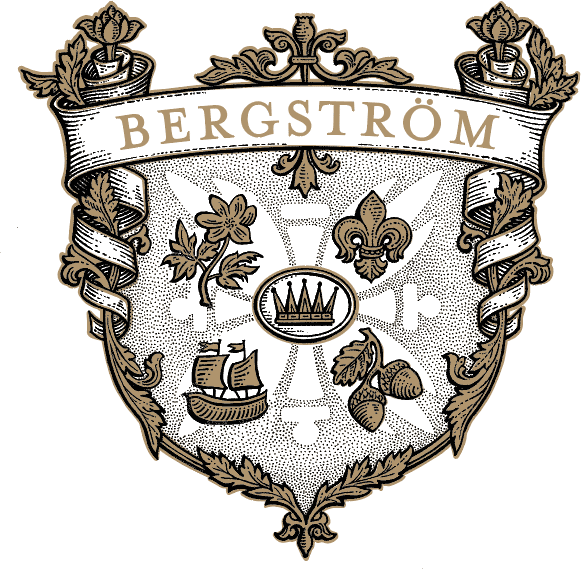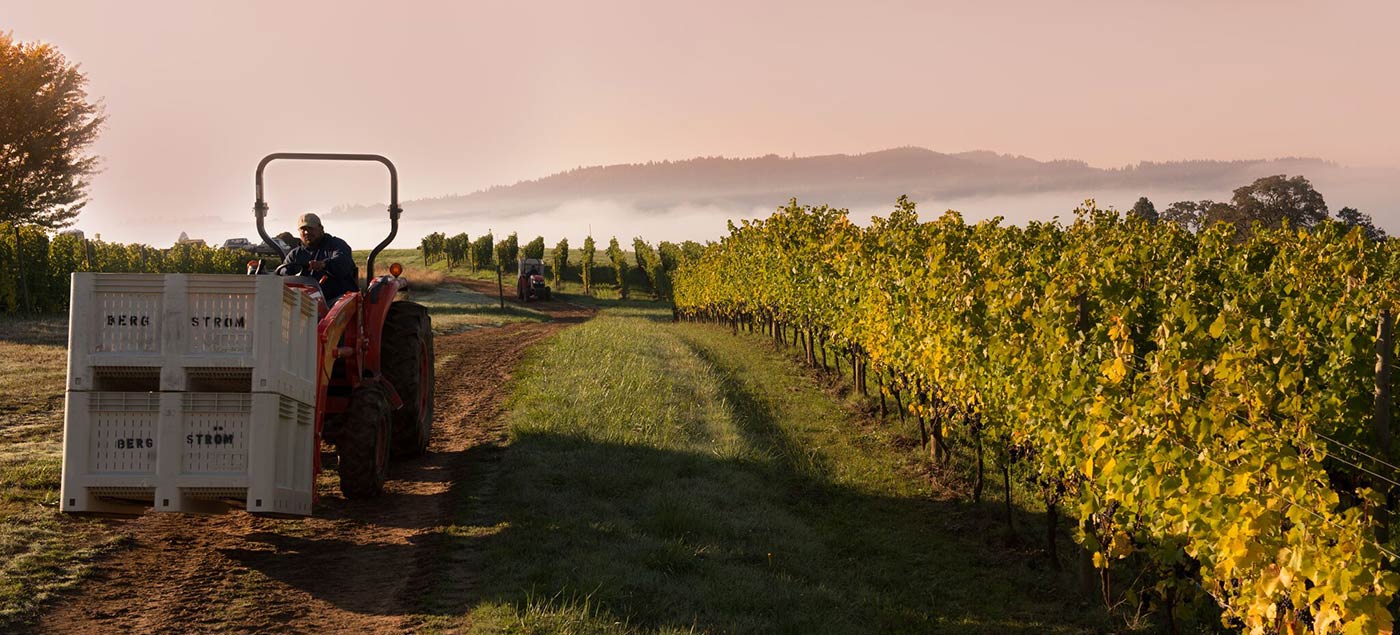I was honored to participate in the 2014 Oregon Chardonnay Symposium which was held at the Stoller Vineyards on Saturday March 8th 2014. I spoke on a distinguished panel alongside: Dominique Lafon (Domaine des Comtes Lafon and Evening Lands), Veronique Drouhin (Maison Joseph Drouhin and Domaine Drouhin Oregon), David Adelsheim (Adelsheim Vineyards), Robert Brittain (Brittain Vineyards), Doug Tunnell (Brick House Vineyards), Wynn Peterson-Nedry (Chehalem), Melissa Burr (Stoller) and Jesse Lange (Lange.) The panel was moderated by Cole Danehower.
The following is the speech that I delivered on our Sigrid Chardonnay and the future of Oregon Chardonnay:
Oregon Chardonnay is definitely the buzz these days but I would like to start off by saying that I feel it would be unjust not to thank the men and women from Oregon who have been working hard to craft great Chardonnays for the past 20-50 years. Some of you are on this panel and some of you are in the audience and some of you are departed, but you are the ones who helped pave the way for us to sit here today. Let’s face it, Oregon Chardonnay is not a new thing, but it is going through a fantastic renaissance.
I have been a winemaker in Oregon for almost 18 years and during that time I have always made Pinot Noir and Chardonnay. But for much of my career I also made Pinot Gris, Riesling, Gewurztraminer and Sauvignon Blanc. When we first started out, Oregon’s white wine scene was very confusing, and I would venture to say that it still is. When it comes to Red wines, we are all in agreement that Pinot Noir is the most successful, most viable varietal for the Northern Willamette Valley. But when it comes to white wines, we celebrate diversity.
In the early days my first Chardonnays were without intent or guidance or a feeling of knowing who I wanted to be when I grew up. My early Pinot Noirs were large scaled and known for extraction and concentration and so the finesse of Chardonnay was lost on me even though elegant white Burgundies were my favorite wines to drink. One year I would try to emulate the California style… and fail. The next year I would try to emulate the Dominique Lafon style…. And fail. And finally in 2003, I reached my pinnacle of disappointment and made the most disgusting Chardonnay I have ever made. It was a big oily ripe banana cream pie wine weighing in at over 15% alcohol. I dumped all 8 of those barrels down the drain and decided to re-create my white wine program.
When I looked at the Press, Burgundy and California were dominant in world Chardonnay production and appreciation. But when I looked at the Oregon paradigm I realized very quickly that, beyond the 5 or so focused high end white wine producers in the state who were intentionally making white wines of purpose, white wines in Oregon were generally loss leaders and took the back seat to Pinot Noir both in winemaking and in marketing. The best known wineries in Oregon at the time focused primarily on Pinot Noir. Our white wines were expected by the consumer and press to be: cheap, quaffable, not too serious but of good quality. When a wine distributor told me “Hey, you’re from Oregon, don’t take yourself too seriously” I decided to change the paradigm…. And then I decided to change distributors.
There are two distinct moments in my career that I can remember which had a profound effect on how I think about, grow and make Chardonnay in Oregon and which have shaped the Chardonnay from Bergstrom Wines sitting in front of you today.
The first one was when I met David Lett and was fortunate enough to be able to purchase Chardonnay fruit and make wine from the Eyrie Vineyard. Like many of you, David let me taste through his extensive library and purchase bottles for my studies and inspiration. This was the first time I had ever tasted salinity and sea-shell like minerality in Oregon Chardonnay… something I had believed only came from the old world. Needless to say I was inspired and one day I told David that I wanted to make a world class chardonnay that was driven by vibrant acidity and a mineral freshness and he just looked at me as if to say “hey dummy, what do you think I have been trying to do for 40 years?” But he didn’t say that, he just encouraged me onward. It was those three years working with David that inspired my Sigrid Chardonnay program which we first launched in 2006 and that was when I decided to phase out the aromatic white varietals that I had also been making and just focus on Chardonnay as my one and only white wine.
So, I decided to plant chardonnay and farm it to the same quality standards as my Pinot Noirs: On the best slopes, labor intensive, Biodynamic, lower yields. I experimented with different picking dates, different fermentation strategies and I decided to let the wine age at its own pace and I would only release it when it was ready. But most importantly rather than pricing it first and working backwards, I put in the work first and then priced it accordingly. All of that essentially to say that my goal was, and still is, to make the greatest white wine in America, not just something I could serve at winemaker dinners for the appetizer hour.
I learned that the problem with a white wine program that doesn’t take risks to push the boundaries of quality is that it will be confined to a price and a category that competes with the world’s sea of mediocre wines as well as add to the historical market malaises around Oregon Chardonnay. To make a mediocre wine fruit would have to be purchased not planted to save money, Yields would have to be raised to save money, small batches would have to be abandoned to save money, the wine would have to be bottled and released early to save money and in the end all you have done is saved money….. Not made a world class wine. Not inspired anybody. Not fulfilled a higher purpose.
Those of you who travel extensively to sell your Oregon Pinot Noirs know all too well that it is far easier and more gratifying to sell our place and our purpose rather than compete on price or brand with the rest of the world. Place is paramount and we just happen to have one of the greatest places on earth for making world class Chardonnay.
The second moment that changed my thinking on Chardonnay was in 2011, when I went back to Burgundy, and worked harvest with three different Chardonnay producers on the Cote d’Or: Etienne Sauzet in Puligny, Bernard Moreau in Chassagne and Jean Marc Roulot in Meursault. Oregon was having one of our latest vintages in history and Burgundy was having one of its earliest, so it was a perfect opportunity to try and fit two harvests into one year and potentially learn from some of my Chardonnay heroes.
I went to Burgundy hoping to glean some top-secret information that maybe they knew and we didn’t but what I learned there was almost embarrassingly humbling and that is this:
I believe that Burgundy tastes like Burgundy because their intention is to make Burgundy.
That may sound like an overstatement of the obvious but think about it: The farming is straight forward and the winemaking is straight forward, there aren’t a lot of secrets… but their vision and their tradition is to make Burgundy. They pick their fruit when it is at its peak of aromatic and flavor intensity when the grapes are vibrantly acidic, low in sugars and showcasing flavors of lime, lemon and granny smith apples. (flavors that I had long associated with under ripeness.) They pick for integrity of fruit knowing that the transformative process of Chardonnay in the barrel and in the bottle will create a wine that will be defined as Burgundy. And as I was walking down this row of grapevines in the Batard Montrachet vineyard on a beautiful sunny day with a forecast of 2 more weeks of sunshine and there was no more fruit on the vine I thought to myself “Wow they must have horrifically botched this potentially great vintage by picking so early… The forecast was beautiful, where are the grapes?”
And that was when I realized this simple truth that while I was still trying to figure out who I was going to be when I grew up…. Burgundy was already a grown up. They picked their fruit when it was ready to make the Burgundy style. If they had waited through the two more weeks of sunshine they would have made something else, not Burgundy.
The humbling part about this A-HA moment for me was not so much the simplicity of it all but the fact that the Burgundundian style wasn’t decided upon at some late night winemaker’s drinking party at the Clos Vougeot, or at a seminar such as this one….. this style came out of generations of work and most importantly evolved alongside their food and cultural traditions and then was eventually enforced by the AOC to protect it and keep it from mutating……Because several villages and hundreds of families have all evolved together farming this way and making wine this way and celebrating that it is this way, it is Burgundian. So the question remained for me as I flew home: what is Oregonian?
Wines are consistently coming out of our state that rival some of the greatest wines made anywhere but the greatest wines are still a minority. The bar needs to be pushed even higher in our pursuit for consistency of quality. Just because Oregon makes Chardonnay doesn’t mean it is a slam dunk. We still need to prove ourselves as being of consistently high quality over time and worth the consumer’s investment.
As well it is absolutely critical for Oregon Chardonnay’s future that we continue to invest in our infrastructure and plant vineyards with the intention of making world class wines. We need to look at that perfect slope and decide to plant Chardonnay, not just Pinot Noir. Shopping around for fruit may temporarily fuel a renaissance but Chardonnay acreage will need to make a comeback for this to become a true movement.
All of this work has already begun as today’s seminar is evidence. Oregon is working as a community rallying behind this noble varietal in pursuit of greatness and the creation of a new version of Chardonnay for the world: Oregonian Chardonnay. A Chardonnay that pairs well with our local abundance of seafood, mushrooms, hazelnuts and heavily tattooed chefs. And when enough high quality Chardonnays are being made on a regular basis that showcase consistency of quality and thoughtful intent, then people will start to talk about Oregonian Chardonnay the same way they do Burgundian or Californian Chardonnays and that is as an independent entity that does not need comparison to another region to be defined.
And on that final note, we need to frequently look back at where we have been because our past is our foundation. And we need to hold that dear but accept that thoughtful change and innovation is what is going to push us forward. We also need to keep looking at Burgundy but not as though we are looking into a mirror or a wishing well. Because, just like our Pinot Noirs, when we stop mimicking or trying to fit into an existing paradigm and we put all of our collective effort into a qualitative movement…. that is when Oregon shines the brightest.



